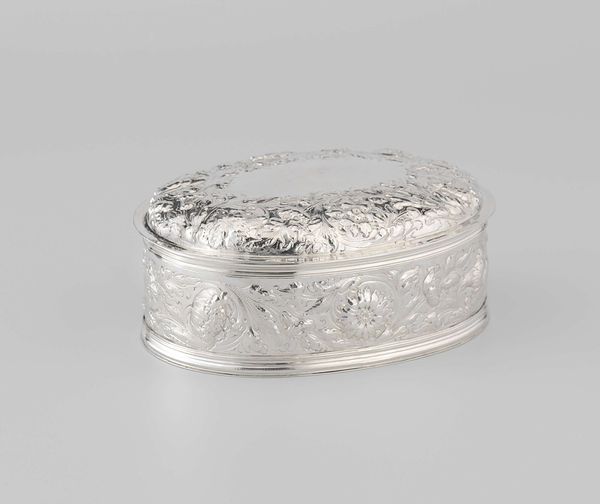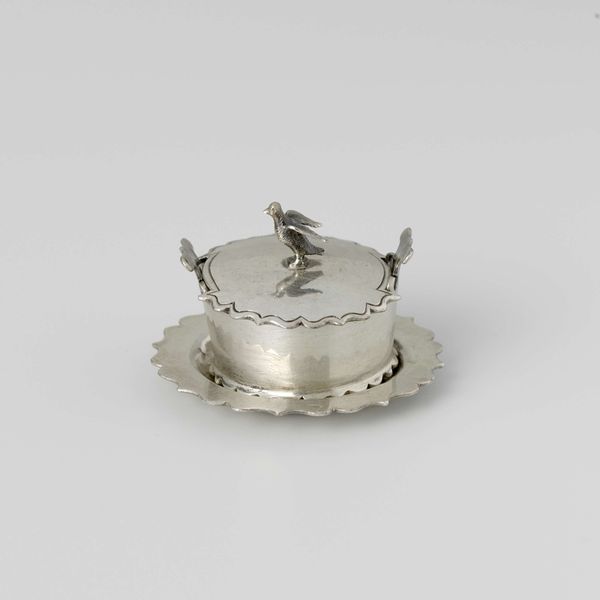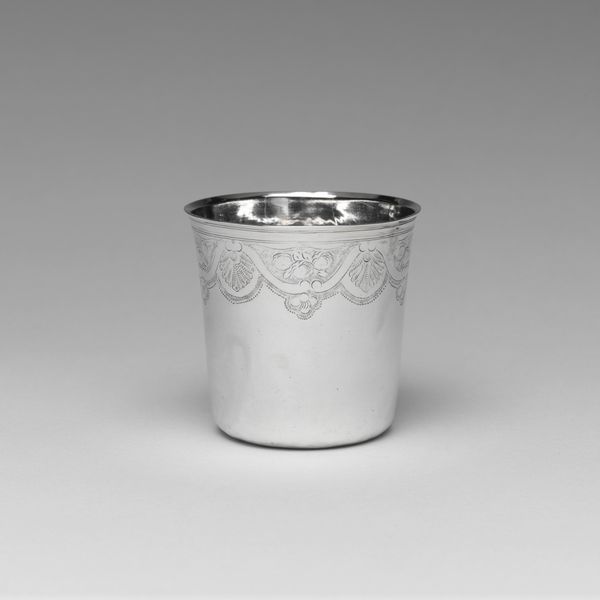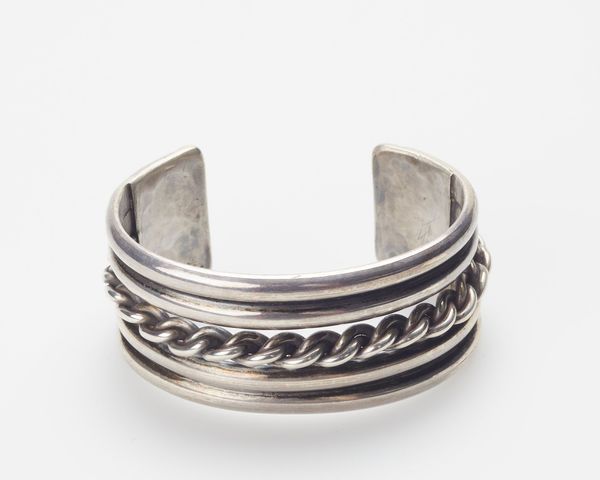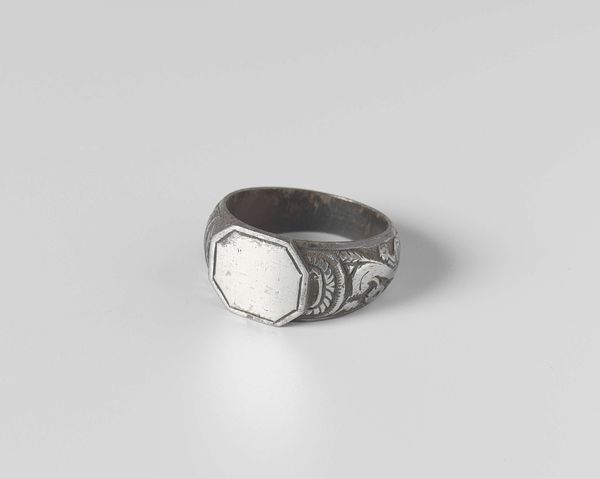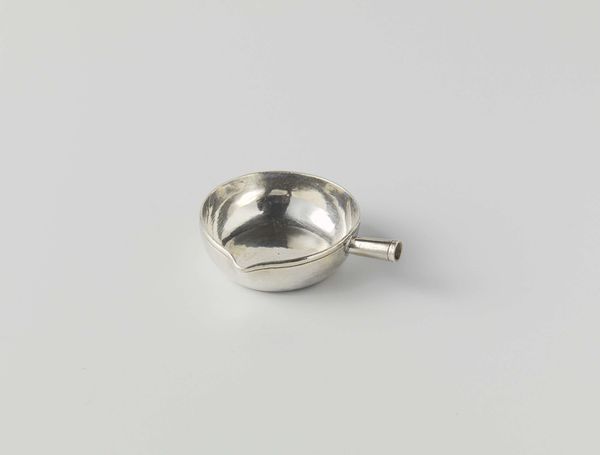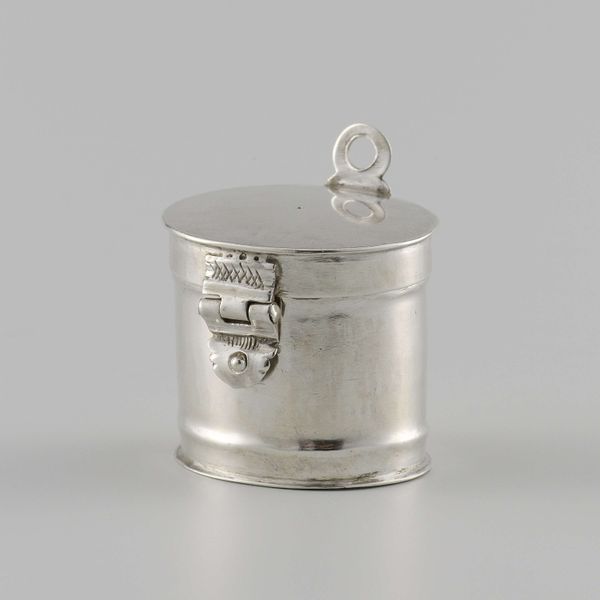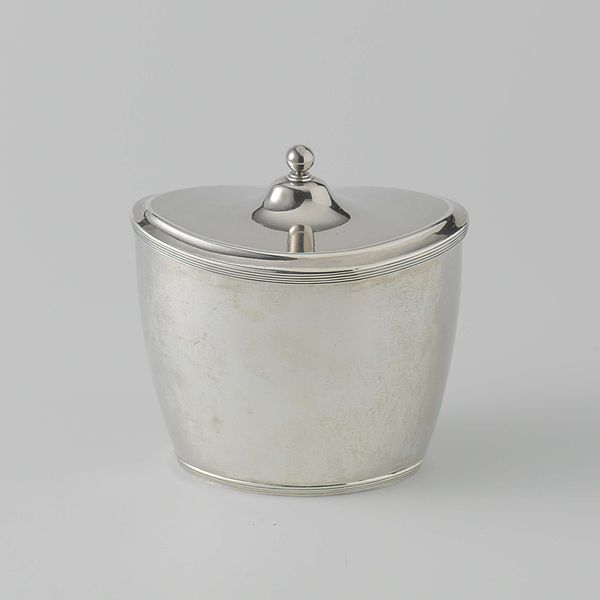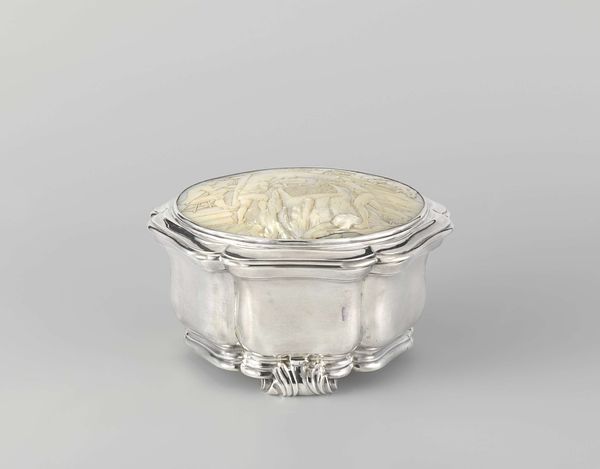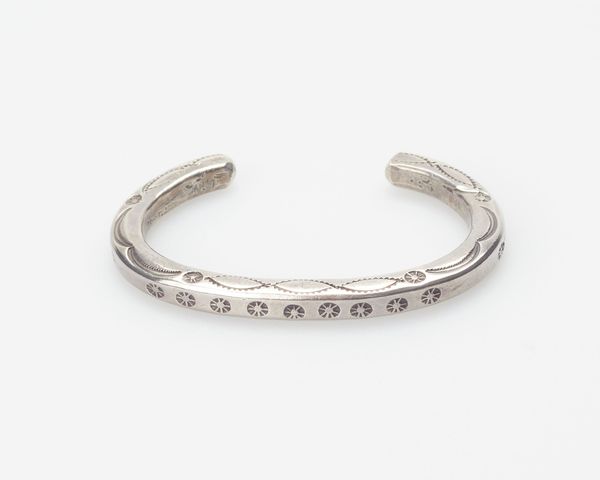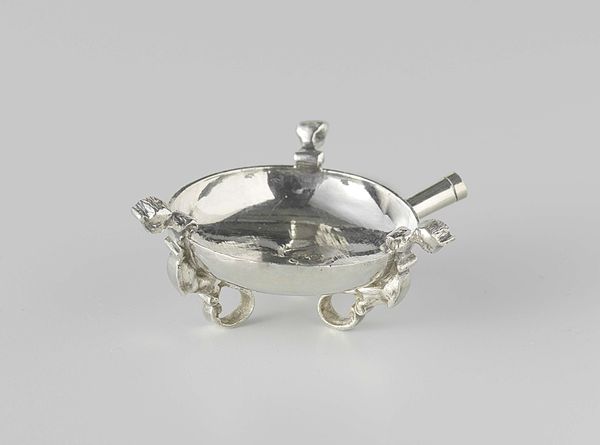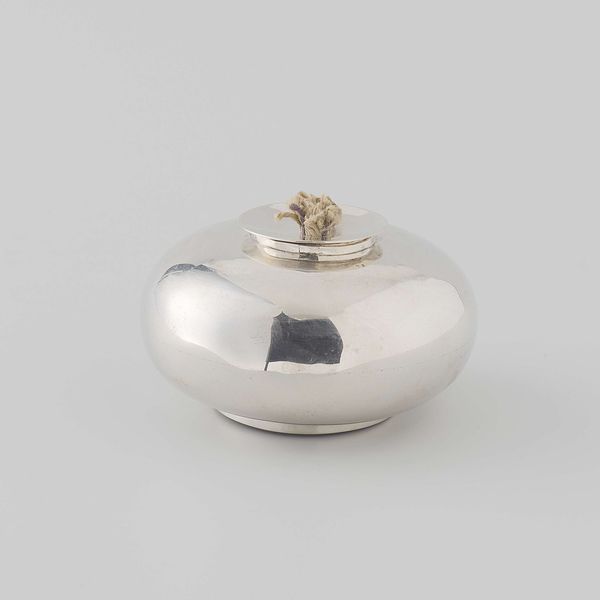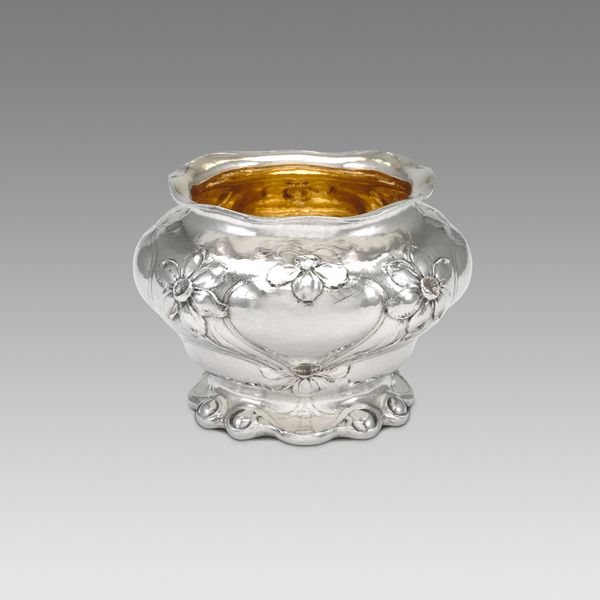
metal
#
baroque
#
metal
#
decorative-art
Dimensions: height 2.8 cm, diameter 3.6 cm
Copyright: Rijks Museum: Open Domain
Curator: Here we have a striking piece of baroque decorative art. It's a covered kettle created around 1725 by Frederik van (I) Strant, crafted meticulously from metal. Editor: Its reflective surface is immediately captivating. Despite its utilitarian purpose, there is an undeniable refinement, an elegant simplicity. Curator: Absolutely. The kettle’s reflective materiality really speaks to its societal context, hinting at the Dutch Republic's prosperous era when silver and refined objects like this weren’t merely functional but markers of status and taste, accessible within certain circles of society. What kind of gendered practices of domesticity does its very existence imply? Editor: Examining the maker's role reveals even more. The craftsmanship involved, the labor—these were essential in shaping both its form and its symbolic worth. Was Strant a recognized silversmith? The details could indicate specialized labor practices prevalent at that time, a blend of art and industry. Curator: Indeed. Frederik van (I) Strant was known for working primarily in silver. And notice how the geometric patterned detailing adds to its ornamental quality, inviting closer scrutiny. We need to investigate how decorative elements work in dialogue with the object's functionality. Editor: Exactly. The scale forces you to appreciate the delicate engraving. These repeated patterns seem integral to understanding consumption habits of the wealthy; decorative objects like this kettle facilitated societal gatherings like the coffee or tea service and all the subtle power plays that go with that. Curator: Placing this kettle within collections can offer insights into trade routes, labor divisions, and the circulation of not only goods but also cultural values associated with status. Editor: Right. So what seemed initially to be a lovely object reveals multiple stories, ones rooted in skill, and of course the socioeconomic implications tied to commodity culture of the era. Curator: Thinking about objects this way encourages an understanding of material culture—challenging simplistic art history narratives. Editor: Definitely. Considering all those intertwined histories enriches how we perceive it.
Comments
No comments
Be the first to comment and join the conversation on the ultimate creative platform.
